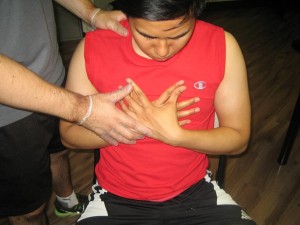Aortic valve stenosis involves narrowing of the aortic valve. The aortic valve enables the flow of blood from the lower left chamber of the heart into the aorta and to the rest of the body. The ensuing stenosis prevents the valve from properly opening, forcing the heart to strain harder to pump blood via the valve. This results to the buildup of pressure in the left ventricle and thickening of the heart muscle.
https://www.youtube.com/watch?v=JorBOLNzfUY
The heart might be able to endure the stenosis and additional pressure for a long time. On the other hand, at some point, it could no longer keep up with the added effort of pumping blood via the constricted valve. Over time, this results to heart failure.
What are the possible causes of aortic valve stenosis?
The issues that can cause aortic valve stenosis include:
- Buildup of calcium on the aortic valve. As one starts to age, calcium can accumulate on the valve which makes it thick and hard. This buildup occurs over time, thus the symptoms do not usually manifest until after the age of 65.
- Congenital heart defects
- Rheumatic heart fever or endocarditis
Chest pain or pressure or a tight, heavy sensation in the chest.
What are the indications?
Aortic valve stenosis progresses in a slow manner. For several years or even decades, the individual does not have any symptoms. At some point, the valve is likely to narrow in which issues start to manifest. The symptoms are usually triggered by exercise when the heart should strain.
As the condition becomes worse, symptoms such as the following can occur:
- Chest pain or pressure or a tight, heavy sensation in the chest
- Feeling faint or dizzy
- Feeling tired or shortness of breath
- Sensation that the heart is racing, pounding or beating erratically
If the individual starts to notice any of these symptoms, inform a doctor right away. If there are symptoms, the doctor might recommend valve replacement. At this point, the condition is already serious. If there are symptoms, the individual is at risk for sudden death.
Management
If there are no symptoms present, the doctor will regularly check the heart. Unless there are symptoms or tests that indicate that the pumping action of the heart is weakening, surgery is a risky option.
In case there are symptoms, surgery is required. This involves replacement of the aortic valve. If the valve could not be replaced after the symptoms occur, the individual can die abruptly or develop heart failure. The replacement of the valve will allow the individual to have a normal lifespan as well as improve the quality of life.

